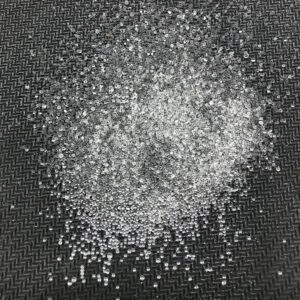Glass beads are an ideal abrasive, helping you save both time and money. When you can spend less time on one cycle, you can get through more cycles faster if you have a large number of items that need blasting. The available range of sizes ensures you produce the desirable finish on your parts. Experienced glass bead blasting media suppliers can help you choose between coarser glass beads and finer ones.
Glass beads and crushed glass are both effective abrasives to produce a desired finish on a part. Glass beads are commonly used in a blast cabinet or reclaimable type of blast operation. They impart a consistently bright matte finish on aluminum and steel substrates. Crushed glass is most desirable for removing heavy coatings, paint layers or rust to expose a clean and bare surface. Although they’re both manufactured from glass, the final finishes produced can vary.
If you’re trying to decide what abrasive is best for the job at hand, comparing glass beads and crushed glass is a crucial way to determine if one of these options is right for you.
WHEN TO USE GLASS BEADS
Glass beads are best suited for finishing metals. They can be used for frosting and etching glass, among other typical applications:
- Cleaning (perfect for surface preparation without changing tolerances or imparting ferrous contaminants)
- Finishing (varying sizes create a wide range of unique surface finishes and blending of machining marks)
- Peening (reduces the tensile stress in metal components, increasing fatigue limits)
- Deburring (successful removal of burrs without any part damage resulting in a smooth peened surface)
A benefit to using glass beads is that they are environmentally friendly and contain no free silica, a common concern in metal finishing operations. Generally found in traditional sandblasting media, free silica can release harmful chemicals during the abrasion process. While companies can still choose silica sand, more regulations are required due to workers’ increased risk of severe respiratory disease.

